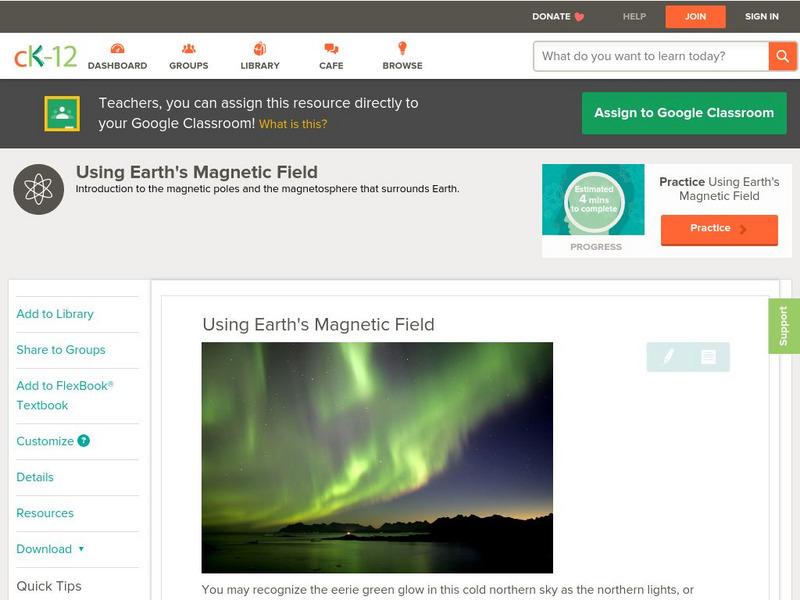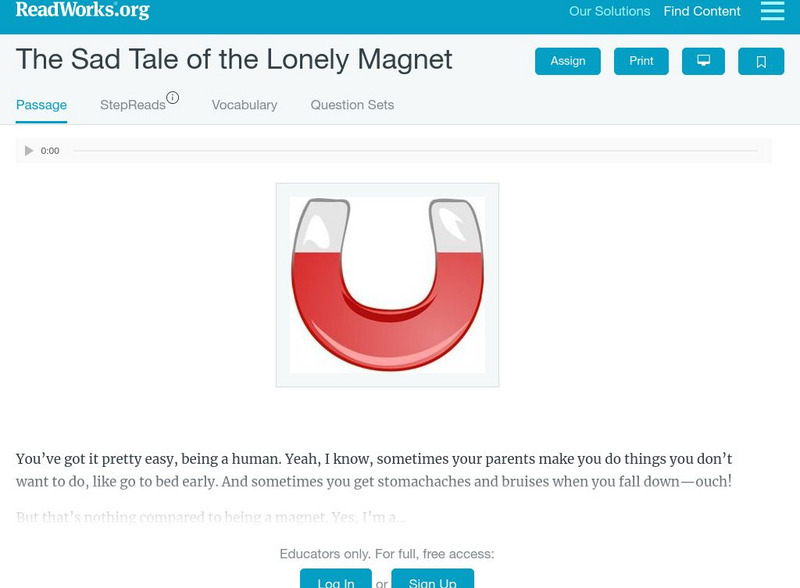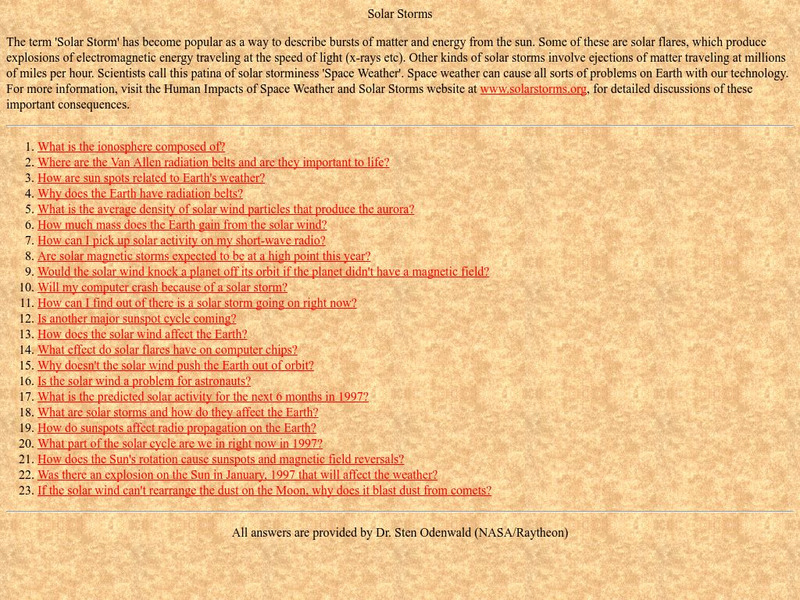Hi, what do you want to do?
Curated OER
Circuits And Conductors
Learners predict the common classroom items, such as paper clips, chalk, keys, or erasers, that will be good conductors in a circuit. They build circuits using a variety of circuit diagrams to test their predictions.
Curated OER
Teeth and Eating
Students explore animal diets and teeth. In this animal science lesson, students view photos of animals and their teeth. Students identify the type of diet the animal has based on the teeth. Students are introduced to the terms...
Curated OER
Plate Tectonics: Recycling the Seafloor
Students classify earth's layers and plates using Ocean Seismicity data. In this plate tectonics lesson, students outline where the plate boundaries are on the world map. They then compare these predicted boundaries with USGS map of the...
Curated OER
Sports in Physics: Measuring Velocity in a Mini-Olympics
Eighth graders examine the difference between speed, velocity and acceleration. In this velocity instructional activity students read and construct a line graph and a bar graph to show information about velocities of sports...
Aiken County Public Schools
Claymation in the Classroom
Students design an appropriate and usable storyboard and then create a claymation video. They take digital photographs frame by frame, then assemble the stop-motion movie using video software.
American Museum of Natural History
Create Your Own Time Capsule
The corona virus pandemic is indeed a historic event. A time capsule activity permits young historians to document these days of social distancing, remote learning, and quarantine by collecting artifacts that capture what their lives are...
Teach Engineering
Archimedes' Principle, Pascal's Law and Bernoulli's Principle
What do Pascal's law, Archimedes' Principle, and Bernoulli's Principle have to do with fluid mechanics? The included PowerPoint presentation provides the basic definitions and equations associated with the three. A set of homework...
Curated OER
Renaissance: Rebirth to Revolution
Sixth graders use a variety of resources to research the Middle Ages and Renaissance over a nine-week period. Working in cooperative teams, they become experts on specific topics. Students hold a Renaissance Faire and role-play as...
Curated OER
Dorothea Lange and the Relocation of Japanese Americans
Students consider the relocation of Japanese Americans during World War II. In this Japanese relocation lesson plan, students examine photographs by Dorothea Lange, the "Pledge of Allegiance," and a US government flyer from 1942. They...
Curated OER
Electricity Safety Video
Students discuss Picture 1 - Electrical Applicances. They discuss their prior knowledge of electricity and then listen to a video. They then answer the questions on the worksheet called, "Lesson 1 Electricity Safety Video" and share...
Curated OER
Electric Circuits
Young scholars explore energy by completing an electricity worksheet. In this conductors lesson, students define the energy related vocabulary terms circuit, electronics, conductor and semi-conductor before examining computer chips in...
Curated OER
Health and Growth
Learners identify healthy foods. In this nutrition lesson plan, students review the five food groups and categorize healthy and unhealthy foods on a chart. Learners develop their own menus.
Curated OER
Get a Line on Integers
Middle schoolers explore number sense by completing math function problems in class. In this integers lesson, students define integers and practice plotting them on a number line. Middle schoolers utilize math functions such as addition...
Curated OER
Changing Sounds
Students identify how the pitch and the loudness of an instrument can be altered by examining the sounds made by three instruments.
University of Minnesota
University of Minnesota: Ships: Science & Religion of Michael Faraday
Here's a whole different look at Faraday. His religion, Sandemanian, greatly influenced both his life and his science. This article looks deeply at that aspect of his life.
National High Magnetic Field Laboratory
Magnet Academy: Timeline of Electricity and Magnetism: 1900 1909
Albert Einstein publishes his special theory of relativity and his theory on the quantum nature of light, which he identified as both a particle and a wave. With ever new appliances, electricity begins to transform everyday life.
CK-12 Foundation
Ck 12: Physical Science: Using Earth's Magnetic Field
[Free Registration/Login may be required to access all resource tools.] The Earth's magnetic field and how it protects life on Earth, and how it is used for navigation.
CK-12 Foundation
Ck 12: Third Grade Science
This customizable digital textbook covers topics related to third-grade science. It is Next Generation Science Standards (NGSS) aligned.
Discovery Education
Discovery Education: Science of Everyday Life: Interaction at a Distance [Pdf]
An experiment where learners investigate the strength of magnets. This site includes a lesson plan with both teacher and student information for completing the experiment.
Math Science Nucleus
I. Science Ma Te: Integrating Science, Math and Technology
This site offers a wealth of online textbook-related materials that encourage the discovery of science in the world around us. Enter the site to access material on specific topics. Each section contains reading material (complete with...
Read Works
Read Works: The Sad Tale of the Lonely Magnet
[Free Registration/Login Required] A literary text about life from a magnet's point of view. A question sheet is available to help students build skills in reading comprehension.
National High Magnetic Field Laboratory
Magnet Academy: John Ambrose Fleming
John Ambrose Fleming was an electronics pioneer who invented the oscillation valve, or vacuum tube, a device that would help make radios, televisions, telephones and even early electronic computers possible. A brilliant innovator,...
National High Magnetic Field Laboratory
Magnet Academy: James Joule
James Prescott Joule experimented with engines, electricity and heat throughout his life. Joule's findings resulted in his development of the mechanical theory of heat and Joule's law, which quantitatively describes the rate at which...
NASA
Nasa: Image Science Center: Ask the Space Scientist Earth
Site from NASA contains a collection of 91 questions pertaining to the Earth's atmosphere, magnetic field, ionosphere, rotation and origin of life.


























